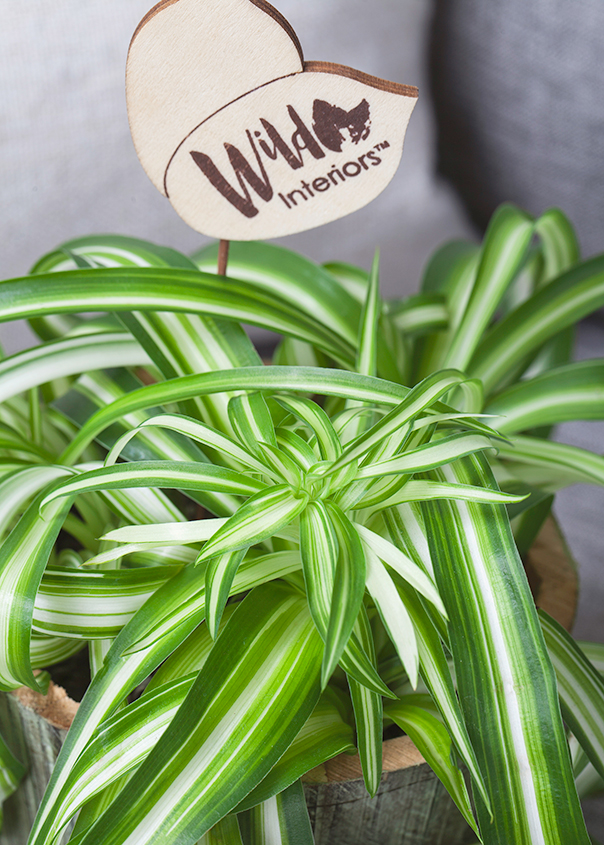Spider Plant Care (+ Propagation Tips!)
Most plant parents at some time in their lives will have a Spider Plant, as it's one of the easiest plants to care for. The Spider plant is a beloved houseplant that is great for beginners and rewarding for experienced plant owners too! This blog post will discuss the care needs of Spider Plants as well as tips on Spider Plant propagation.
Truly, if you want to get into plants and aren’t sure where to start – Spider Plants are a great place. They’re low maintenance, don’t need much attention, and are adaptable to most environments.
How much light does a Spider Plant need?
As we said above, Spider Plants are like easy-going friends. They truly will grow anywhere, but they do want certain conditions to help them thrive. Bright to medium light is best, and you should avoid direct sunlight which can burn your Spider Plant’s leaves. Sunburn looks like brown spots on the leaves or browning tips and edges of leaves and should be trimmed off if it appears, in addition to moving your plant to a slightly darker area. You can also find a way to diffuse light if that location is the best for your plant. Spider Plants can be kept in lower light levels, but they will grow more and faster with more access to light. If you keep them in a dimmer or darker area, you will see growth but don’t expect it to be as much as if the plant had more access to light.
How often should you water a Spider Plant?
Spider Plants like to stay evenly moist but not soaking wet. It’s almost always better to underwater than overwater your plant if you aren’t sure. Avoid letting your Spider Plant dry out completely and do not overwater or leave the plant in a non-draining pot where the roots may rot if they sit in too much moisture. Typically, water when the top 1-2 inches of soil dries out as a rule of thumb.
Spider Plants also enjoy average humidity at home, but if your home is very dry consider a small humidifier or keeping your plant in the bathroom where it can receive help from the steam of your morning shower.
Does a Spider Plant need fertilizer?
As with most indoor houseplants, you can fertilize spider plants once or twice per month in the growing season (spring and summer), but overfertilizing can harm the plant, so be careful! A standard houseplant fertilizer will do the trick, and you can dilute to half strength to err on the side of caution. Also, make sure not to water your Spider Plant the week you fertilize it, it simply just doesn’t need that much water.
What is the best temperature for a Spider Plant?
Spider Plants are easy to keep indoors at regular room temperature between 65 and 85 degrees. They’ll even thrive outside in the spring and summer once temperatures are consistently higher than 55 degrees. If you move your plant outside, make sure it isn’t in bright or direct sunlight and watch for sunburn. If you plant to move your plant outside in the summer, gradually increase its lighting conditions so it isn’t shocked when it is able to have more direct access to sunlight.
How to Propagate a Spider Plant?
When a Spider Plant reproduces, or propagates, it grows a long stem that will develop tiny “spiderettes,” or what we like to call Spider Plant babies. These babies can be kept on the stem until they have developed roots, which will look like small protrusions at the base of the spiderette. You can choose to root these spiderettes in soil or water.
Snip off your spiderette (with sterilized, clean scissors) and plant its tiny roots in a well-draining potting soil in a pot with drainage holes. Optionally, you can root the spiderette in a small glass or jar of water for a few weeks for it to develop longer roots before transplanting into the soil.
For the best-looking new Spider Plant, plant several spiderettes in a pot together to encourage a more bushy and full appearance as the plant grows. Keep the soil slightly moist until new growth shows, then revert to your normal care habits.
Common Spider Plant problems
Brown Tips
Spider Plants commonly have dried, brown tips, which can be trimmed off (but keep a little bit of the brown edge to avoid introducing bacteria to a fresh cut in your leaves). A common cause of this “tip burn” is using tap water, as Spider Plants can be very sensitive to the chemicals used to treat municipal tap water.
Try using filtered water or dechlorinating drops to help avoid tip burn. Not enough moisture (either via watering or humidity) can also cause dried tips, so make sure you water adequately.
Lastly, sunburn is also a frequent cause of brown leaves, as they are quite literally burning from too much light. Trim those pieces and move your plant into a slightly dimmer area.
Pests
Spider Plants, like other houseplants, can pick up common pests like Mealybugs and Scale. If an infestation is small, you can typically remove the pests by wiping them away by rubbing alcohol on a cotton swab and treating your plant with a mild antimicrobial soap like Dawn. Once infestations are well established, it’s probably best to throw your plant away for the safety of your other plants, unfortunately.
Root Rot
Since Spider Plants enjoy being a bit root-bound, it can be easy to miss if they overgrow their pot and start blocking drain holes. Pay close attention because if your plant’s roots don’t allow for proper drainage, the roots will sit in excess water and rot. Make sure to check your plant often, as root rot isn’t something you want to catch too late.

